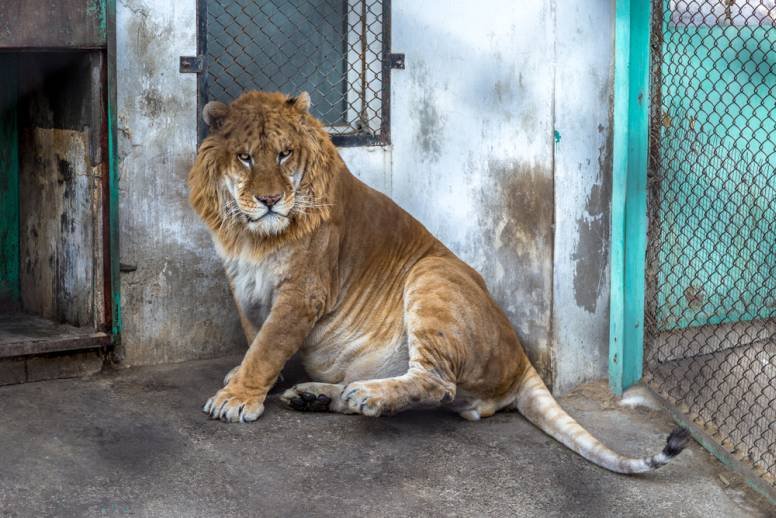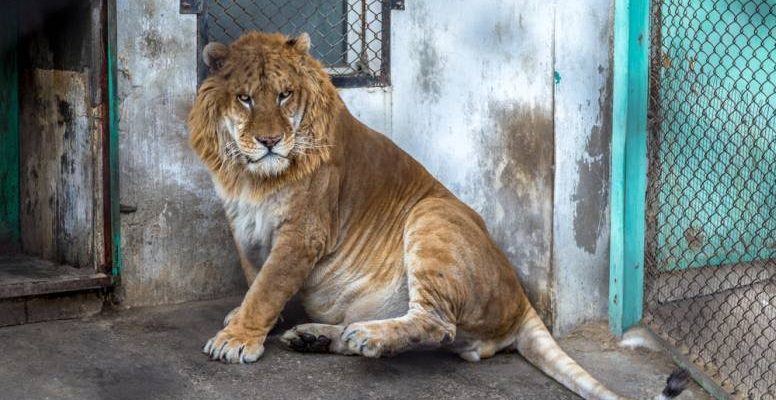
Ligers might not be found in the wild as often as their parent species, mainly because they are generally bred in captivity. However, understanding their adaptations can give us insights into how they might have fared in the wild. While tigers and lions have evolved to live in different climates and terrains, ligers inherit traits from both that can sometimes give them an edge when the going gets tough. Let’s break down the survival tactics that make ligers so unique.
Adaptations from Their Parents
Ligers inherit a mix of traits from both lions and tigers. This diversity can be incredibly beneficial when it comes to surviving tough conditions. For example, lions are social animals that thrive in pride, while tigers are solitary and stealthy hunters. Ligers often blend these behaviors. They can adapt to being around others or choose to be alone, depending on what their environment demands.
Their physical size is another noteworthy adaptation. Ligers are often larger than both parent species, which can help them intimidate potential threats and compete for resources. Think of it like having the bulk of a lion but the agility of a tiger. This combination allows them to navigate through various environments—from dense forests to open savannas—while looking for food and shelter.
Here’s the thing—ligers also inherit the adaptability from tigers, who can thrive in diverse habitats. This means ligers have a broader range when it comes to finding food, whether it’s hunting small animals or scavenging leftovers. This flexibility can be crucial in harsh conditions where food is scarce.
Dietary Flexibility
One significant factor in a liger’s survival is its dietary flexibility. In the wild, lions typically hunt in groups to take down large prey like zebras or buffaloes, while tigers often hunt alone for smaller animals like deer. Ligers, with their mixed heritage, can adapt to different food sources, which is essential in tough environments.
In captivity, ligers are often fed a balanced diet that mimics what they would eat in the wild: meat, poultry, and fish. But if they were in a harsher climate, you’d find them eating whatever was available. This adaptability is vital. For instance, if larger game is scarce, a liger can switch its diet to smaller creatures or even scavenging—just like tigers do.
This flexibility isn’t just a survival tactic; it also reflects their ability to learn. Ligers can observe and adapt their hunting techniques based on what’s available, which is a trait they might have inherited from both parents. Honestly, it’s a game changer in environments where other animals might struggle to find consistent food.
Behavioral Adaptations
Behavior is crucial for survival, and ligers display fascinating behavioral adaptations that help them cope with harsh environments. For one, ligers can be more playful and curious than other big cats, a trait that helps them learn quickly about their surroundings. This playfulness isn’t just for fun; it’s a survival strategy. Just like kids learn through play, ligers learn how to navigate their environment and interact with other animals, which can be vital in finding food and avoiding danger.
Another behavior that helps ligers thrive is their hunting technique. They can shift from stealthy ambush tactics, inspired by their tiger lineage, to the more aggressive pack hunting style of lions when necessary. This versatility means that ligers are better equipped to handle different situations they might face in the wild.
Moreover, ligers tend to exhibit a greater level of social interaction compared to their parents. While lions work in groups, ligers can bond in a way that helps them share resources and protection. Even in captivity, they often show a willingness to interact with other animals, fostering a sense of community, which can be essential for psychological well-being in high-stress environments.
Thermal Regulation
Living in extreme climates can be tough, but ligers show intriguing adaptations for thermal regulation. Tigers are known to thrive in colder weather, while lions prefer warmer temperatures. Ligers, with their impressive size and mixed genetics, have learned to find a balance that allows them to cope.
When it’s hot, ligers often spend time in shaded areas, just like lions do. They might also take to water—something both tigers and lions may do, but ligers seem to enjoy a good swim more than some of their relatives. This allows them to cool off and stay hydrated, which is crucial in dry or hot environments.
In colder conditions, ligers grow a thicker coat, similar to tigers, which keeps them warmer. However, their body size can be a double-edged sword; while larger animals often retain heat better, they can also risk overheating. This is where their behavior of seeking shade comes into play again, showing how adaptable they truly are.
Conservation Challenges and Insights
While it’s fascinating to learn how ligers survive, we must also consider the challenges they face in the wild—if they were to exist there. The hybrid status of ligers often means they are bred in captivity for entertainment or curiosity, rather than for conservation. This brings forth ethical considerations about their existence.
Here’s the thing: since ligers are hybrids, they often face reproductive issues and health problems due to inbreeding. This means that while they showcase incredible adaptability and strength in survival—traits that could theoretically help them in the wild—the odds of their thriving there are slim. Without proper genetic diversity, ligers may struggle to survive long-term.
Furthermore, awareness is key. By understanding the incredible adaptations ligers have, we can foster discussions about conservation efforts not just for hybrids, but for both parent species. Protecting the natural habitats of lions and tigers ensures that these magnificent creatures, and their potential hybrids, can continue to exist and thrive—even in harsh conditions.
Ligers are a remarkable blend of lion and tiger, showcasing incredible adaptations that allow them to survive in challenging environments. From their dietary flexibility to their unique behavioral traits, these hybrids have developed a toolkit for thriving against the odds. But while it’s easy to marvel at their abilities, it’s also essential to consider the conservation challenges they face, both in captivity and in potential wild scenarios.
By learning about ligers and spreading awareness of both their strengths and vulnerabilities, we can help ensure a future for all big cats. These fascinating creatures remind us of the wonders of nature and the importance of preserving the rich diversity of life around us. So next time you think about ligers, remember—they’re more than just big cats; they’re symbols of resilience in our world.

